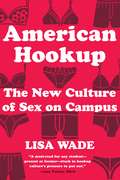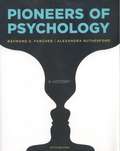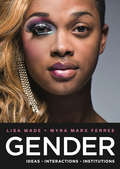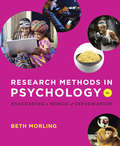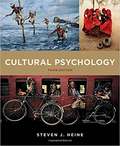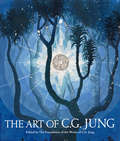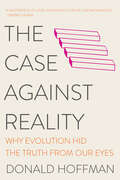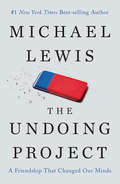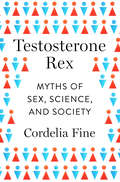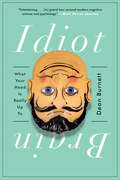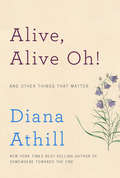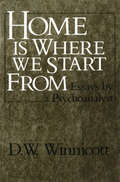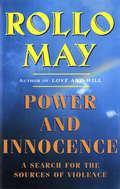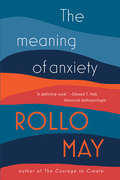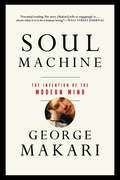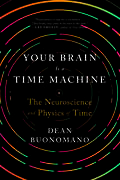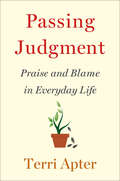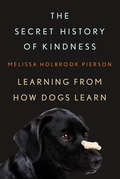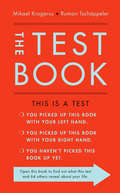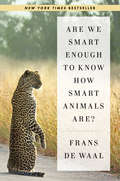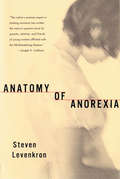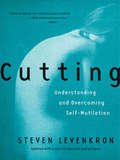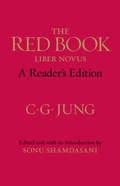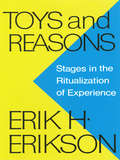- Table View
- List View
American Hookup: The New Culture of Sex on Campus
by Lisa WadeA revelatory account of the new culture of sex that has come to dominate the American college experience. The hookup is now part of college life. Yet the drunken encounter we always hear about tells only a fraction of the story. Rising above misinformation and moralizing, Lisa Wade offers the definitive account of this new sexual culture and demonstrates that the truth is both more heartening and more harrowing than we thought. Offering invaluable insights for parents, educators, and students, Wade situates hookup culture within the history of sexuality, the evolution of higher education, and the unfinished feminist revolution. Using new research, she maps out a punishing emotional landscape marked by unequal pleasures, competition for status, and sexual violence. She discovers that the most privileged students tend to like hookup culture the most, and she considers its effects on racial and sexual minorities, students who “opt out,” and those who participate ambivalently. Accessible and open-minded, compassionate and brutally honest, American Hookup explains where we are and how we got here, asking not “How do we go back?” but “Where do we go from here?”
Pioneers of Psychology (Fifth Edition)
by Alexandra Rutherford Raymond E. FancherPioneers of Psychology tells the stories of the men and women who have shaped our understanding of what it means to be human. The authors illuminate major themes and controversies in psychology's history through carefully crafted stories of real people, their personal journeys, and their intellectual insights. The Fifth Edition includes three new chapters covering historiography, pre-1600 psychological ideas, and clinical psychology.
Gender: Ideas, Interactions, Institutions
by Myra Marx Ferree Lisa WadeA lively exploration of current questions of gender and their application to students today. Wade and Ferree's first edition textbook is a lively introduction to the sociology of gender. Probing questions, the same ones that students often bring to the course, frame readable chapters that are packed with the most up-to-date scholarship available--in language students will understand. The authors use memorable examples mined from pop culture, history, psychology, biology, and everyday life to truly engage students in the study of gender and spark interest in sociological perspectives.
Research Methods in Psychology (Second Edition)
by Beth MorlingThis market-leading text emphasizes future consumers of psychological research, uses real-world examples drawn from popular media, and develops students’ critical-thinking skills as they become systematic interrogators of information in their everyday lives
Cultural Psychology (Third Edition)
by Steven J. HeineThe most contemporary and relevant introduction to the field, Cultural Psychology, Third Edition, is unmatched in both its presentation of current, global experimental research and its demonstration of how cultural psychology is relevant to students' lives, their society, and the world around them.
The Art of C. G. Jung (Collected Works Of C. G. Jung Ser. #40)
by The Foundation of the Works of C.G. JungA lavishly illustrated volume of C.G. Jung’s visual work, from drawing to painting to sculpture. A world-renowned, founding figure in analytical psychology, and one of the twentieth century’s most vibrant thinkers, C.G. Jung imbued as much inspiration, passion, and precision in what he made as in what he wrote. Though it spanned his entire lifetime and included painting, drawing, and sculpture, Jung’s practice of visual art was a talent that Jung himself consistently downplayed out of a stated desire never to claim the title “artist.” But the long-awaited and landmark publication, in 2009, of C.G. Jung’s The Red Book revealed an astonishing visual facet of a man so influential in the realm of thought and words, as it integrated stunning symbolic images with an exploration of “thinking in images” in therapeutic work and the development of the method of Active Imagination. The remarkable depictions that burst forth from the pages of that calligraphic volume remained largely unrecognized and unexplored until publication. The release of The Red Book generated enormous interest in Jung’s visual works and allowed scholars to engage with the legacy of Jung’s creativity. The essays collected here present previously unpublished artistic work and address a remarkably broad spectrum of artistic accomplishment, both independently and within the context of The Red Book, itself widely represented. Tracing the evolution of Jung’s visual efforts from early childhood to adult life while illuminating the close relation of Jung’s lived experience to his scientific and creative endeavors, The Art of C.G. Jung offers a diverse exhibition of Jung’s engagement with visual art as maker, collector, and analyst.
The Case Against Reality: Why Evolution Hid The Truth From Our Eyes
by Donald HoffmanCan we trust our senses to tell us the truth? Challenging leading scientific theories that claim that our senses report back objective reality, cognitive scientist Donald Hoffman argues that while we should take our perceptions seriously, we should not take them literally. How can it be possible that the world we see is not objective reality? And how can our senses be useful if they are not communicating the truth? Hoffman grapples with these questions and more over the course of this eye-opening work. Ever since Homo sapiens has walked the earth, natural selection has favored perception that hides the truth and guides us toward useful action, shaping our senses to keep us alive and reproducing. We observe a speeding car and do not walk in front of it; we see mold growing on bread and do not eat it. These impressions, though, are not objective reality. Just like a file icon on a desktop screen is a useful symbol rather than a genuine representation of what a computer file looks like, the objects we see every day are merely icons, allowing us to navigate the world safely and with ease. The real-world implications for this discovery are huge. From examining why fashion designers create clothes that give the illusion of a more “attractive” body shape to studying how companies use color to elicit specific emotions in consumers, and even dismantling the very notion that spacetime is objective reality, The Case Against Reality dares us to question everything we thought we knew about the world we see.
The Undoing Project: A Friendship That Changed Our Minds
by Michael Lewis<P>How a Nobel Prize-winning theory of the mind altered our perception of reality. <P>Forty years ago, Israeli psychologists Daniel Kahneman and Amos Tversky wrote a series of breathtakingly original studies undoing our assumptions about the decision-making process. Their papers showed the ways in which the human mind erred, systematically, when forced to make judgments in uncertain situations. Their work created the field of behavioral economics, revolutionized Big Data studies, advanced evidence-based medicine, led to a new approach to government regulation, and made much of Michael Lewis's own work possible. Kahneman and Tversky are more responsible than anybody for the powerful trend to mistrust human intuition and defer to algorithms. <P>The Undoing Project is about a compelling collaboration between two men who have the dimensions of great literary figures. They became heroes in the university and on the battlefield--both had important careers in the Israeli military--and their research was deeply linked to their extraordinary life experiences. Amos Tversky was a brilliant, self-confident warrior and extrovert, the center of rapt attention in any room; Kahneman, a fugitive from the Nazis in his childhood, was an introvert whose questing self-doubt was the seedbed of his ideas. They became one of the greatest partnerships in the history of science, working together so closely that they couldn't remember whose brain originated which ideas, or who should claim credit. They flipped a coin to decide the lead authorship on the first paper they wrote, and simply alternated thereafter. <P>This story about the workings of the human mind is explored through the personalities of two fascinating individuals so fundamentally different from each other that they seem unlikely friends or colleagues. In the process they may well have changed, for good, mankind's view of its own mind. <P><b>A New York Times Bestseller</b>
Testosterone Rex: Myths of Sex, Science, and Society
by Cordelia Fine“Goodbye, beliefs in sex differences disguised as evolutionary facts. Welcome the dragon slayer: Cordelia Fine wittily but meticulously lays bare the irrational arguments that we use to justify gender politics.”—Uta Frith, emeritus professor of cognitive development, University College London Many people believe that, at its core, biological sex is a fundamental, diverging force in human development. According to this overly familiar story, differences between the sexes are shaped by past evolutionary pressures—women are more cautious and parenting-focused, while men seek status to attract more mates. In each succeeding generation, sex hormones and male and female brains are thought to continue to reinforce these unbreachable distinctions, making for entrenched inequalities in modern society. In Testosterone Rex, psychologist Cordelia Fine wittily explains why past and present sex roles are only serving suggestions for the future, revealing a much more dynamic situation through an entertaining and well-documented exploration of the latest research that draws on evolutionary science, psychology, neuroscience, endocrinology, and philosophy. She uses stories from daily life, scientific research, and common sense to break through the din of cultural assumptions. Testosterone, for instance, is not the potent hormonal essence of masculinity; the presumed, built-in preferences of each sex, from toys to financial risk taking, are turned on their heads. Moving beyond the old “nature versus nurture” debates, Testosterone Rex disproves ingrained myths and calls for a more equal society based on both sexes’ full, human potential.
Idiot Brain: What Your Head Is Really Up To
by Dean BurnettA neuroscientist's delightful tour of our mysterious, mischievous, entirely fallible gray matter. It's happened to all of us at some point. You walk into the kitchen, or flip open your laptop, or stride confidently up to a lectern, filled with purpose—and suddenly haven't the foggiest idea what you’re doing. Welcome to your idiot brain. Yes, it is an absolute marvel in some respects—the seat of our consciousness, the pinnacle (so far) of evolutionary progress, and the engine of all human experience—but your brain is also messy, fallible, and about 50,000 years out-of-date. We cling to superstitions, remember faces but not names, miss things sitting right in front of us, and lie awake at night while our brains replay our greatest fears on an endless loop. Yet all of this, believe it or not, is the sign of a well-meaning brain doing its best to keep you alive and healthy. In Idiot Brain, neuroscientist Dean Burnett celebrates blind spots, blackouts, insomnia, and all the other downright laughable things our minds do to us, while also exposing the many mistakes we've made in our quest to understand how our brains actually work. Expertly researched and entertainingly written, this book is for everyone who has wondered why their brain appears to be sabotaging their life, and what on earth it is really up to.
Alive, Alive Oh!: And Other Things That Matter
by Diana Athill“An invitation to sit a spell with an intractable and witty friend.” —New York Times Book Review What will you remember if you live to be 100? Diana Athill charmed readers with her prize-winning memoir Somewhere Towards the End, which transformed her into an unexpected literary star. Now, on the eve of her ninety-eighth birthday, Athill has written a sequel every bit as unsentimental, candid, and beguiling as her most beloved work. Writing from her cozy room in Highgate, London, Diana begins to reflect on the things that matter after a lifetime of remarkable experiences, and the memories that have risen to the surface and sustain her in her very old age. “My two valuable lessons are: avoid romanticism and abhor possessiveness,” she writes. In warm, engaging prose she describes the bucolic pleasures of her grandmother’s garden and the wonders of traveling as a young woman in Europe after the end of the Second World War. As her vivid, textured memories range across the decades, she relates with unflinching candor her harrowing experience as an expectant mother in her forties and crafts unforgettable portraits of friends, writers, and lovers. A pure joy to read, Alive, Alive Oh! sparkles with wise and often very funny reflections on the condition of being old. Athill reminds us of the joy and richness of every stage of life—and what it means to live life fully, without regrets.
Home Is Where We Start From: Essays by a Psychoanalyst
by D. W. WinnicottOne of the most gifted and creative psychoanalysts of his generation, D. W. Winnicott made lasting contributions to our understanding of the minds of children. His ideas have influenced the diverse psychoanalytic schools of Anna Freud, Melanie Klein, and Hans Kohut. But his reach extends far beyond professional circles: his talks to general audiences over the years won him enormous numbers of followers among parents and teachers who have found his observations rich in penetrating insight. This collection brings together many of Winnicott's most important pieces, including previously unpublished talks and several essays from books and journals now difficult to obtain. They range widely in topic—from "The Concept of a Healthy Individual" and "The Value of Depression" to "Delinquency as a Sign of Hope"—and elucidate some of Winnicott's seminal ideas, such as the "transitional object" and the concept of false self. All convey Winnicott's vision of the ways in which the developing self interacts with the family and the larger society.
Power and Innocence: A Search for the Sources of Violence
by Rollo MayStressing the positive, creative aspects of power and innocence, Rollo May offers a way of thinking about the problems of contemporary society. Rollo May defines power as the ability to cause or prevent change; innocence, on the other hand, is the conscious divesting of one's power to make it seem a virtuea form of powerlessness that Dr. May sees as particularly American in nature. From these basic concepts he suggests a new ethic that sees power as the basis for both human goodness and evil. Dr. May discusses five levels of power's potential in each of us: the infant's power to be; self-affirmation, the ability to survive with self-esteem; self-assertion, which develops when self-affirmation is blocked; aggression, a reaction to thwarted assertion; and, finally, violence, when reason and persuasion are ineffective.
The Meaning of Anxiety
by Rollo MayIn this revised edition of his classic work--the first modern book on anxiety following Freud and Kierkegaard--psychologist Rollo May brings order and lucidity to the subject of anxiety. Rollo May challenges the idea that "mental health is living without anxiety," believing it is essential to being human. He explores how it can relieve boredom, sharpen sensibilities, and produce the tension necessary to preserve human existence. May sees a link extending from anxiety to intelligence, creativity, and originality, and guides the reader away from destructive ways to positive ways of dealing with anxiety. He convincingly proposes that anxiety can impel personal change, as it is only by confronting and coping with it that self-realization can occur.
Soul Machine: The Invention of the Modern Mind
by George MakariA brilliant and comprehensive history of the creation of the modern Western mind. Soul Machine takes us back to the origins of modernity, a time when a crisis in religious authority and the scientific revolution led to searching questions about the nature of human inner life. This is the story of how a new concept—the mind—emerged as a potential solution, one that was part soul and part machine, but fully neither. In this groundbreaking work, award-winning historian George Makari shows how writers, philosophers, physicians, and anatomists worked to construct notions of the mind as not an ethereal thing, but a natural one. From the ascent of Oliver Cromwell to the fall of Napoleon, seminal thinkers like Hobbes, Locke, Diderot, and Kant worked alongside often-forgotten brain specialists, physiologists, and alienists in the hopes of mapping the inner world. Conducted in a cauldron of political turmoil, these frequently shocking, always embattled efforts would give rise to psychiatry, mind sciences such as phrenology, and radically new visions of the self. Further, they would be crucial to the establishment of secular ethics and political liberalism. Boldly original, wide-ranging, and brilliantly synthetic, Soul Machine gives us a masterful, new account of the making of the modern Western mind.
Your Brain Is a Time Machine: The Neuroscience and Physics of Time
by Dean Buonomano"Beautifully written, eloquently reasoned…Mr. Buonomano takes us off and running on an edifying scientific journey." —Carol Tavris, Wall Street Journal In Your Brain Is a Time Machine, leading neuroscientist Dean Buonomano embarks on an "immensely engaging" exploration of how time works inside the brain (Barbara Kiser, Nature). The human brain, he argues, is a complex system that not only tells time, but creates it; it constructs our sense of chronological movement and enables "mental time travel"—simulations of future and past events. These functions are essential not only to our daily lives but to the evolution of the human race: without the ability to anticipate the future, mankind would never have crafted tools or invented agriculture. This virtuosic work of popular science will lead you to a revelation as strange as it is true: your brain is, at its core, a time machine.
Passing Judgment: The Power Of Praise And Blame In Everyday Life
by Terri ApterTerri Apter reveals how everyday judgments impact our relationships and how praise, blame, and shame shape our sense of self. Do you know that praise is essential to the growth of a healthy brain? That experiences of praise and blame affect how long we live? That the conscious and unconscious judgments we engage in every day began as a crucial survival technique? Do you think people shouldn’t be judgmental? But, how judgmental are you, and how does this impact your relationships? “Keenly perceptive” (The Atlantic) psychologist and writer Terri Apter reveals how everyday judgments impact our relationships, and how praise, blame, and shame shape our sense of self. Our obsession with praise and blame begins soon after birth. Totally dependent on others, rapidly we learn to value praise, and to fear the consequences of blame. Despite outgrowing an infant’s dependence, we continue to monitor others’ judgments of us, and we ourselves develop what relational psychologist Terri Apter calls a “judgment meter,” which constantly scans people and our interactions with them, and registers a positive or negative opinion. In Passing Judgment, Apter reveals how interactions between parents and children, within couples, and among friends and colleagues are permeated with praise and blame that range far beyond specific compliments and accusations. Drawing on three decades of research, Apter gives us the tools to learn about our personal needs, goals and values, to manage our biases, to tolerate others’ views, and to make sense of our most powerful, and often confusing, responses to ourselves and to others.
The Secret History of Kindness: Learning from How Dogs Learn
by Melissa Holbrook PiersonAn intimate, surprising look at man's best friend and what the leading philosophies of dog training teach us about ourselves. Years back, Melissa Holbrook Pierson brought home a border collie named Mercy, without a clue of how to get her to behave. Stunned after hiring a trainer whose immediate rapport with Mercy seemed magical, Pierson began delving into the techniques of positive reinforcement. She made her way to B. F. Skinner, the behavioral psychologist who started it all, the man who could train a pigeon to dance in minutes and whose research on how behavior is acquired has ramifications for military dolphin trainers, athletes, dancers, and, as he originally conceived, society at large. To learn more, Pierson met with a host of fascinating animal behaviorists, going behind the scenes to witness the relationships between trainers and animals at the National Zoo in Washington, DC, and to the in-depth seminars at a Clicker Expo where all the dogs but hers seemed to be learning new tricks. The often startling story of what became of a pathbreaking scientist's work is interwoven with a more personal tale of how to understand the foreign species with whom we are privileged to live. Pierson draws surprising connections in her exploration of how kindness works to motivate all animals, including the human one.
The Test Book
by Roman Tschäppeler Mikael KrogerusAn essential library of tests for self-knowledge and success, from the strategic thinking experts behind the international bestseller The Decision Book. Are you clever? Can you self-motivate? Are you creative? How do you handle money? Can you lead others well? With their trademark style and wit, best-selling authors Mikael Krogerus and Roman Tschäppeler present sixty-four tests spanning intelligence and personality type; creativity and leadership skills; fitness and lifestyle; and knowledge and belief. From what you see in a Rorschach test to comparing your workout against a Navy SEAL’s, from EQ to IQ and Myers-Briggs in between, The Test Book offers a panoply of ways to assess yourself and decide what you need to succeed. As Krogerus and Tschäppeler highlight, you can only know whether you have the right skills, the right job, or the right partner when you know where you stand right now. Small enough to fit in your pocket but packed with insight and good humor, The Test Book delivers a quick, fun way to evaluate your life and happiness.
Are We Smart Enough to Know How Smart Animals Are?
by Frans de WaalA New York Times bestseller: "A passionate and convincing case for the sophistication of nonhuman minds." —Alison Gopnik, The Atlantic Hailed as a classic, Are We Smart Enough to Know How Smart Animals Are? explores the oddities and complexities of animal cognition—in crows, dolphins, parrots, sheep, wasps, bats, chimpanzees, and bonobos—to reveal how smart animals really are, and how we’ve underestimated their abilities for too long. Did you know that octopuses use coconut shells as tools, that elephants classify humans by gender and language, and that there is a young male chimpanzee at Kyoto University whose flash memory puts that of humans to shame? Fascinating, entertaining, and deeply informed, de Waal’s landmark work will convince you to rethink everything you thought you knew about animal—and human—intelligence.
Alfred C. Kinsey: A Life
by James H. JonesThe hidden life of Alfred C. Kinsey, the principal architect of the sexual revolution. In this brilliant, groundbreaking biography, twenty years in the making, James H. Jones presents a moving and even shocking portrait of the man who pierced the veil of reticence surrounding human sexuality. Jones shows that the public image Alfred Kinsey cultivated of disinterested biologist was in fact a carefully crafted public persona. By any measure he was an extraordinary man--and a man with secrets. Drawing upon never before disclosed facts about Kinsey's childhood, Jones traces the roots of Kinsey's scholarly interest in human sexuality to his tortured upbringing. Between the sexual tensions of the culture and Kinsey's devoutly religious family, Jones depicts Kinsey emerging from childhood with psychological trauma but determined to rescue humanity from the emotional and sexual repression he had suffered. New facts about his marriage, family life, and relationships with students and colleagues enrich this portrait of the complicated, troubled man who transformed the state of public discourse on human sexuality.
Anatomy of Anorexia
by Steven Levenkron"Invaluable to clinicians, parents, teenagers, and adults who are struggling with anorexia." —Lynn E. Ponton, M.D. Anatomy of Anorexia is a tremendous tool for families: now more than ever, early diagnosis and treatment, and family participation, are crucial in helping the anorexic. Preeminent therapist Steven Levenkron demystifies this life-threatening disease and shows how the millions of girls and women who are afflicted with anorexia can be helped—and can look forward to rich and productive lives. "The nation’s premier expert in treating anorexia has written the nation’s premier book for parents, relatives, and friends of young women afflicted with this life-threatening disease."—Joseph A. Califano Jr., president of the National Center on Addiction and Substance Abuse at Columbia University and former U.S. Secretary of Health, Education, and Welfare "[Levenkron’s] insights, descriptions of family relationships, and treatment recommendations for therapists create a rich, deep, and most helpful guide for a community of people whose lives are deeply and painfully affected by this persistent illness."—Samuel C. Klagsbrun, M.D.
Cutting: Understanding and Overcoming Self-Mutilation
by Steven Levenkron<P> A seminal work on treating self-mutilation, revised and updated with illuminating case studies and newly available resources. <P> Nearly a decade ago, Cutting boldly addressed a traumatic psychological disorder now affecting as many as two million Americans and one in fifty adolescents. More than that, it revealed self-mutilation as a comprehensible, treatable disorder, no longer to be evaded by the public and neglected by professionals. Using copious examples from his practice, Steven Levenkron traces the factors that predispose a personality to self-mutilation: genetics, family experience, childhood trauma, and parental behavior. Written for sufferers, parents, friends, and therapists, Cutting explains why the disorder manifests in self-harming behaviors and describes how patients can be helped.
The Red Book: A Reader's Edition
by C. G. Jung Sonu Shamdasani John Peck Mark KyburzA portable edition of the famous Red Book text and essay. The Red Book, published to wide acclaim in 2009, contains the nucleus of C. G. Jung's later works. It was here that he developed his principal theories of the archetypes, the collective unconscious, and the process of individuation that would transform psychotherapy from treatment of the sick into a means for the higher development of the personality. As Sara Corbett wrote in the New York Times, "The creation of one of modern history's true visionaries, The Red Book is a singular work, outside of categorization. As an inquiry into what it means to be human, it transcends the history of psychoanalysis and underscores Jung's place among revolutionary thinkers like Marx, Orwell and, of course, Freud." The Red Book: A Reader's Edition features Sonu Shamdasani's introductory essay and the full translation of Jung's vital work in one volume.
Toys and Reasons: Stages in the Ritualization of Experience
by Erik H. EriksonIn a moment in our history beset with grave doubts, Erik H. Erickson inquires into the nature and structure of the shared visions which invigorate some eras and seemed so fatefully lacking in others. He illustrates the human propensity for play and vision, from the toy world of childhood to the dream life of adults, and from the artist's imagination to the scientist's reason. Finally, he enlarges on the origins and structure of one shared vision of universal significance, namely, the American Dream. Such a worldview, he concludes, consists of both vision and counter vision (political and religious, economic and technological, artistic and scientific) which vie with each other to give a coherent meaning to shared realities and to liberate individual and communal energy. Erickson postulates that a space-time orientation provided by a viable worldview is, complimentary to the inner work of the individual psyche and is attuned to its multiple functions. In a central chapter, the author links the phylogeny and the ontogeny of worldviews by describing stages in the ritualization of everyday life--that is, the interplay of customs (including the use of language) with from birth to death convey and confirm the "logic" of the visions predominant or contending in a society. He emphasizes the playful and yet compelling power of viable ritualization to connect individual growth with the maintenance of a vital institutions; but he also illustrates the fateful tendency of human interplay to turn into self-deception and collusion, of ritualization to become deadly ritualism--and of visions to end in nightmares of alienation and distraction. Erickson advocates the pooling of interdisciplinary insights in order to clarify the conscious and unconscious motivation which works for or against the more universal and more insightful worldview essential in a technological age.
